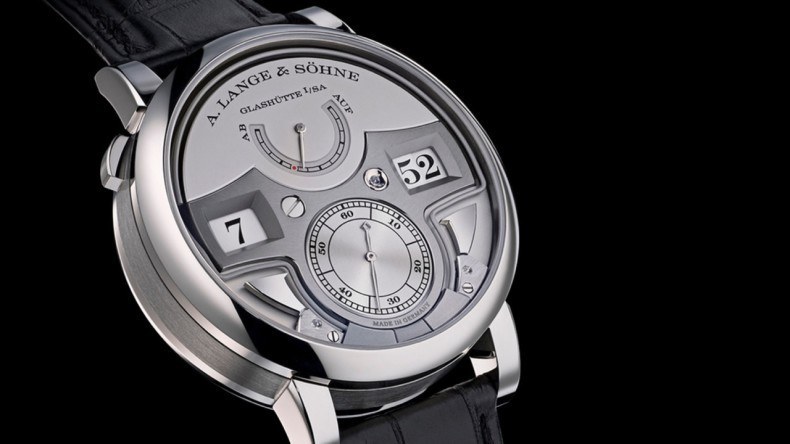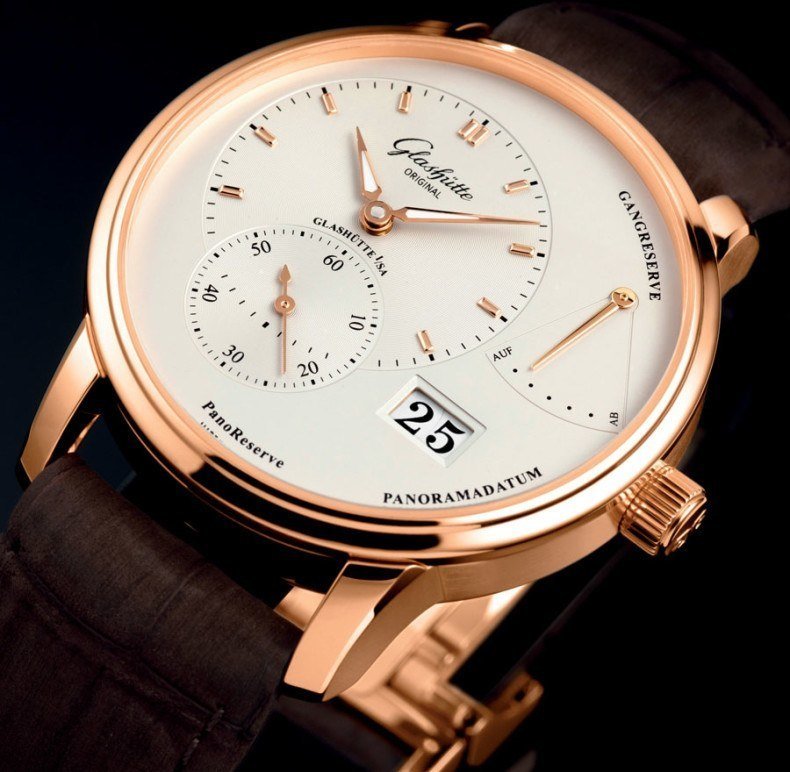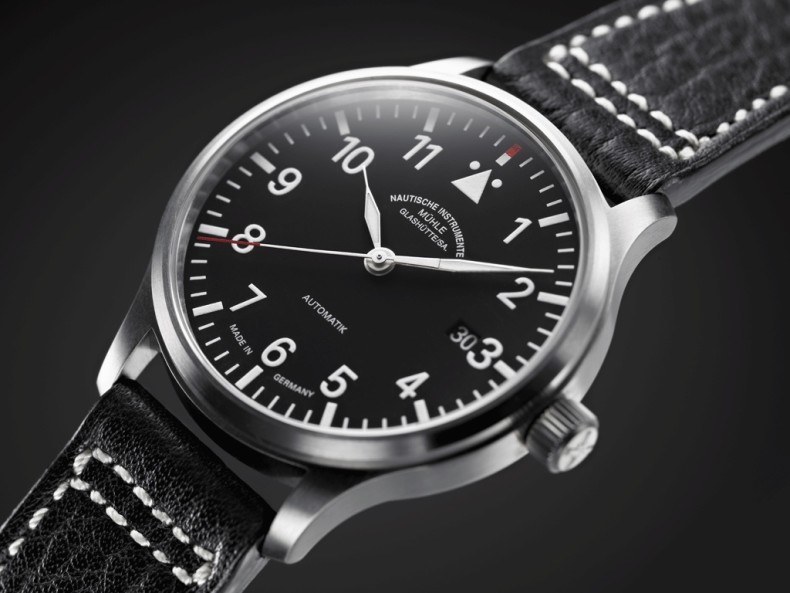It’s unlikely yet true that the existence of some of the finest watches in the world, some costing hundreds of thousands of pounds, is down to something as mundane as good local government.
In fairness to any outraged local councillors reading this I should point out, though, that the local government in this case did include a king.
The practical upshot of this oddity, which we’ll look at below, means a wonderful host of excellent watches available to the likes of you and I, and sometimes for less than we’d expect, as well as the kind of super-watches which you need to have been in Pink Floyd or born in to a Middle Eastern royal family to afford.
Glashutte, a small German town sitting amongst wooded hills and valleys, and criss-crossed by babbling streams, has all the topographical hallmarks of the Swiss towns and villages its output of fine watches has troubled for more than 150 years. Today its influence is growing, its watches have caught public attention anew and it goes from strength to strength as one of the world’s most important horological centres.
But were it not for the fact that Glashutte sits in what was until comparatively recently (in terms of Europe’s very long history) the Independent Kingdom of Saxony, things might have been very different. Once a town built on mining, as its coat of arms indicates, it looked likely to suffer the same exodus of people and money as so many similar places when the mines dried up in the 19th Century. Yet that independence of government, and as it turns out good government, allowed a local watchmaker by the name of Ferdinand Adolf Lange to lobby the King and his underlings to invest in horology as the town’s new future.
The engineering skills are already here, Lange insisted, we have a chance to create something special. In a move that seems alien to those of us who have experienced modern local councils, the men (they were all men back then) in power listened, agreed, and invested. They even offered low-cost loans to aspiring watch-makers, and it worked.
Glashutte became a by-word for innovation and quality across Europe, and within just a few short years watch-making was the heartbeat not just of Glashutte’s economy, but of much of the surrounding area as factories expanded, jobs were created and new colleges were established to train the next generation.
They like a plan, the Germans, and this one was a belter. How sadly different to attitudes in England in the century beforehand which saw London go from the world’s horological powerhouse to a bit player (albeit one fighting back slowly, as we discussed here).
Today the name of Lange, specifically A. Lange & Sohne as the firm is now called, having been bought by Richemont in the years after its 1994 relaunch, is synonymous with some of the greatest watches in the world. Its pieces sit on the wrists of the ultra-rich and the famous and even its “entry” level watches are but a dream for most of us. But Glashutte is bigger than its most famous son and remains home to numerous German brands offering excellent quality at most price points.
Oddly Glashutte’s “Germanness” both helped and hindered it during the 20th Century, before it rose again in recent years.
As we reached the point where most punters wouldn’t consider a watch which didn’t bear the words “Swiss Made” on the dial in the mid 1990s, Glashutte found it struggled to compete for the average buyer. Consequently it focussed on higher quality, but sold without the mark-up of many Swiss brands.
For example, Glashutte watches must adhere to what is the horological equivalent of the famous German “purity law” for beer. At least 50% of the movement of the watch, to use just one element of the rule, must be made in the tiny town itself.
This focus on quality and originality bred a loyal following of informed, savvy watch buyers for whom quality meant more than brand and that, in turn, helped build loyalty which stuck.
In a very German way Glashutte, home to around 7,000 people (more than one in seven of working age are involved in the watch industry), has been quietly getting on with being very good for some long time now.
So what does this mean for the likes of you and I?
Actually let’s make that you, I and Roman Abramovich, otherwise we can’t look at this piece of watch pornography, the Lange & Sohne Zeitwerk Minute Repeater.

You don’t want to know how much this costs because it will only make you sad. Suffice to say if you can afford one you won’t be reading this because you’ll have someone to read it for you.
Not only is it staggeringly beautiful, but it is packed with party pieces, notably a striking mechanism that sounds the hours, ten-minute intervals and minutes.
“The acoustic sequence”, as Lange calls it, “precisely reproduces the digitally displayed time whenever the striking mechanism is triggered with a pusher”: a low-pitched tone for each elapsed hour, a double tone for each elapsed ten-minute period and a high-pitched tone for each elapsed minute.
Back in the real world the Glashutte house which has come on most strongly in recent years is Nomos, a young brand known for its clear, elegant, semi-Bauhaus designs (Nomos is a member of the “Deutscher Werkbund” movement, the guardians of the Bauhaus flame) and its in-house calibers.

A new Nomos can be yours from between £1,200 and £12,000. The lower end of this price range is a real example of what Glashutte offers – quality in-house movements and high-quality production at prices way below what you’d pay for an equivalent watch made over the Swiss border.
More traditional designs come from Glashutte Original, a firm with a strange history involving the reunification of Germany and various amalgamations and buy-outs (the watch-makers of Glashutte were nationalised and bound together by the East German government prior to the fall of the Soviet Union and their re-emergence since that time is often used as an example of East German resurgence more widely).

The modern company which resulted, formed in 1994, favours classical design but often with multiple complications, starting at around £3,600 for gents’ pieces, up to a range of tourbillon watches which cost over £60,000 in the UK.
There are seven or eight more houses we could look at in the small town, and indeed some old names have returned (Tutima and Moritz Grossmann most recently) but let’s finish with Mühle-Glashütte.
The Muhle family can trace their watchmaking history in Glashutte back to 1869 and despite the trials and tribulations of Communism they’re still there. Unlike many other makers in the town Muhle has always been determinedly mid-market and affordable, most famously selling robust nautical watches but these days with a broader range all powered by movements which meet Glashutte’s exacting rules.
In the UK that means prices start under £1,000 and rise to around £2,300 and, given the quality on show, I think they represent wonderful value.

The 40mm, automatic Terrasport II pictured here is a great example. £970 buys you a handsome, beautifully-made watch full of history and pleasingly different to the endless Omegas everyone else will be wearing.
For such a small town Glashutte offers pretty much whatever you might want in watches; only don’t go around shouting about it, they don’t like that in the ore mountains of Saxony.


